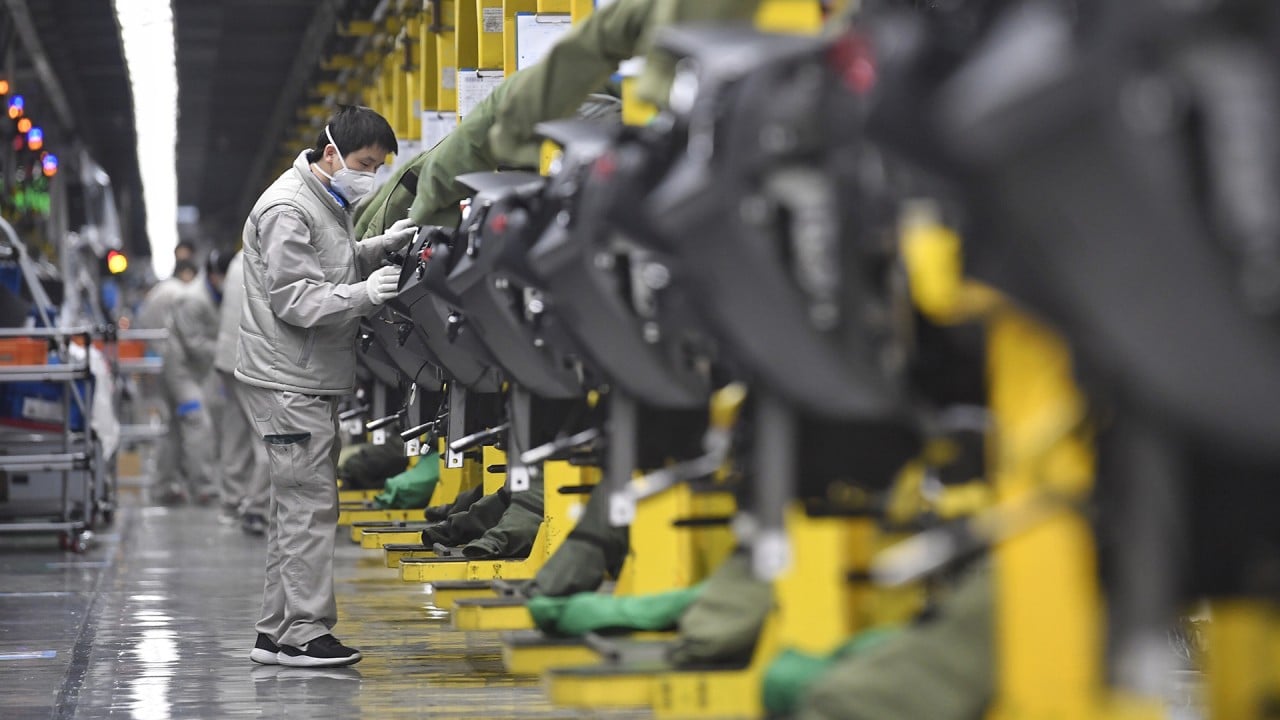
01:33
China’s economy accelerated at end of 2020, but virus-hit annual growth lowest in 45 years

Imagine the challenge facing policymakers trying to salvage global reflation in the midst of a pandemic. Too much stimulus might spark higher inflation, while doing too little could jeopardise sustainable recovery.
It’s a worry now because the latest batch of world business confidence indicators seems to be showing signs of global economic activity starting to flag. Maybe it is a feature of the latest wave of lockdowns, or it could be symptomatic of the world’s economic supply chains being overstretched.
If it is a matter of supply constraints, it is likely to drag on global growth and world trade, and pose problems for major exporting nations such as China and Germany. For all the stark warnings about the risks of higher inflation, there is no reason to ease back on stimulus any time soon.
With so much dislocation to output and jobs during the Covid-19 crisis because of factory shutdowns, worker lay-offs and lockdowns, it is no surprise that the global economy has so much catching up to do. Supply lines have been badly interrupted and the world is running short of key goods and materials.
I live in the countryside, my tractor has broken down and I cannot get hold of the parts needed to repair it. Our LPG home central heating boiler isn’t working either, and we can’t replace it like-for-like as there is a supply shortage on the brand we want.

01:33
China’s economy accelerated at end of 2020, but virus-hit annual growth lowest in 45 years
Instead, we have had to improvise with a natural-gas clone using a conversion kit. Many of the replacement parts coming out of Europe and China are in short supply. The worry is that this is a microcosm of what is happening in the bigger picture.
One of the encouraging aspects of the global recovery since the height of the Covid-19 crisis in the first quarter of 2020 is how quickly business confidence managed to spring back, even before the world economy has reached full working capacity.
Purchasing managers’ indices (PMI) among most major economies have rallied sharply since April’s low point last year, with business confidence breaking above the 50 boom-or-bust threshold to levels consistent with manufacturing activity returning to positive growth. However, there are some worries that the recovery might have come too far, too fast and that optimism might be at risk.
Global PMI manufacturing optimism eased back to 53.5 in January from 53.8 in December, but there have been much more significant moves seen in the US and China in the past few months. The US Institute for Supply Management manufacturing index dropped back from a peak of 60.5 in December to 58.7 in January.

Meanwhile, in China, the Caixin PMI manufacturing index fell from 54.9 last November to 51.5 in January. Similar PMI trends have also been evident in varying degrees for Europe, Japan, Canada and Brazil in the past few months. It’s not an obvious moment for business confidence to be taking a step backwards when there is light at the end of the tunnel in the fight against the pandemic.
Supply-side bottlenecks, delivery problems and price rises seem generally widespread. January’s JPMorgan/IHS Market global manufacturing PMI survey noted that global supply chains appeared increasingly stretched at the start of 2021, with vendor lead times lengthening and disruptions and shortages causing rising price pressures further down the line. According to the report, input price inflation was at its strongest since May 2011.
Meanwhile, shipping industry sources warn that containers, the building blocks of global trade, are in relatively short supply with demand and prices surging. Shipping bottlenecks could easily disrupt global supply chains.
With China arguably the world’s foremost manufacturing powerhouse, this could potentially constrain a stronger recovery. It’s no surprise that business expectations appear a little more circumspect.
China has steamed into a faster recovery in the past 10 months and export growth is surging, but the latest manufacturing PMIs are sounding a note of caution. They suggest a more languid rate of business expansion ahead. Is China’s recovery becoming a little overextended?
While the global outlook seems unsure, Beijing might be better off focusing on domestic recovery, reducing its vulnerability to external risks and shocks. China’s monetary easing has gone as far as is needed, but there is still plenty of scope for extra fiscal stimulus to reach 6 per cent growth or more without overheating China’s economy in the next few years. Recovery from the pandemic will be gradual, and more policy patience is needed.
David Brown is the chief executive of New View Economics